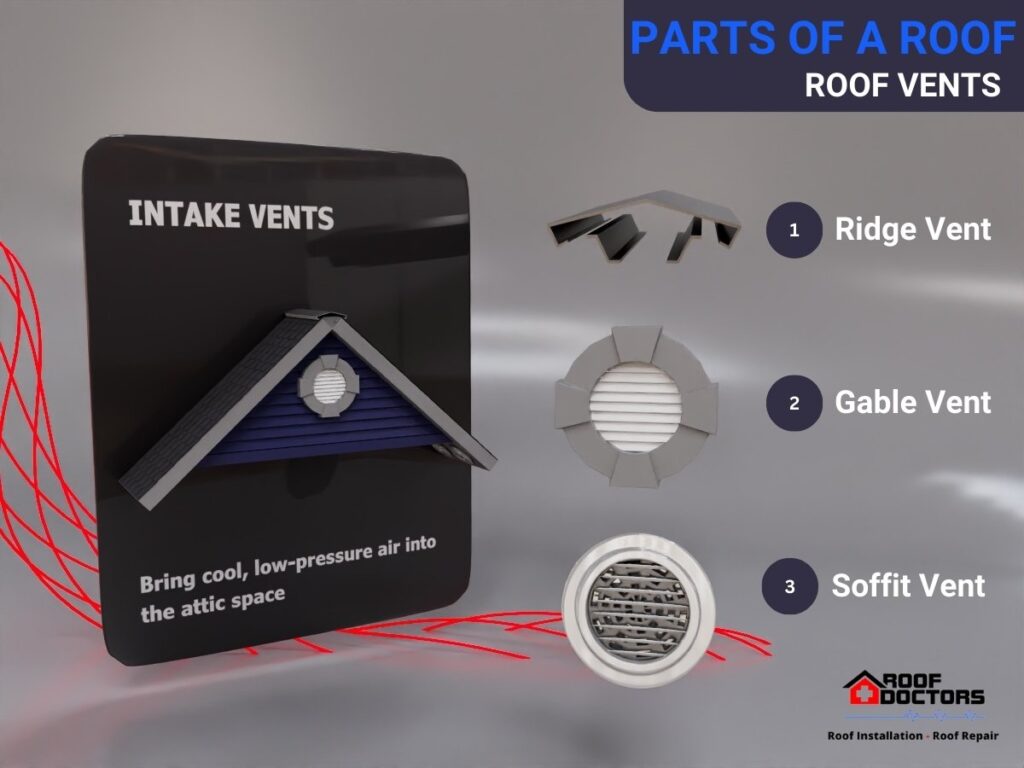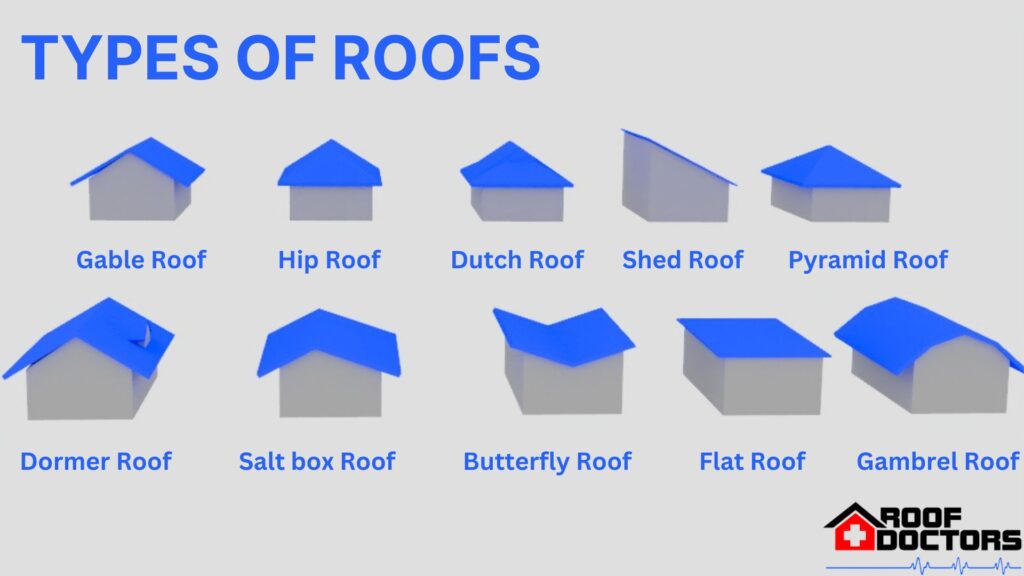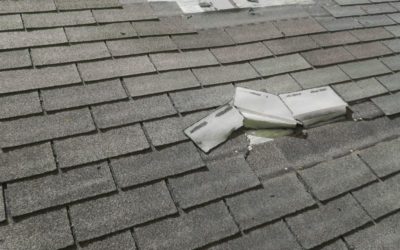Understanding the different parts of a roof is essential for homeowners, builders, and anyone involved in roof maintenance or repairs. A roof is more than just shingles; it consists of various structural and protective components that work together to provide durability, insulation, and weather resistance. Knowing these terms can help you communicate effectively with roofing professionals and make informed decisions about repairs, replacements, or upgrades.
This article explores key roof elements, including its structure (rafters, trusses, sheathing) and covering (shingles, underlayment, flashing). It also covers important components like eaves, soffits, and gutters, along with roof styles and maintenance tips. Whether you’re planning a new roof or just want to learn more, this guide will help you understand essential terminology and functions.
The Roof Structure
A roof is more than just a cover—it’s a system of structural components working together to provide support and protection. Understanding these elements helps in maintaining and constructing a sturdy and reliable roof.
1. Rafters
These sloping wooden beams serve as the structural framework of the roof, supporting both the sheathing and the outer roofing material. They help shape it and provide the necessary strength to withstand various loads.
2. Trusses
Pre-fabricated triangular structures designed to support the roof, trusses are often used instead of rafters, especially for larger spans. They evenly distribute weight across the structure, improving stability and reducing the need for interior load-bearing walls.
3. Ridge Board
A horizontal beam is positioned at the highest point of the roof where the rafters connect. While it helps align and support the rafters, some modern roofs, particularly those using trusses, do not require a ridge board.
4. Sheathing/Decking
These are large flat panels, typically made from plywood or oriented strand board (OSB), that are secured to the rafters or trusses. They create a solid, stable surface for attaching the outer roofing material, enhancing the roof’s strength and durability.
5. Framing
This refers to the entire structural framework of the roof, including rafters or trusses, sheathing, and possibly a ridge board. It forms the foundation of the roof’s shape and ensures the structure remains sturdy and well-supported.
Each of these components plays a vital role in ensuring a roof is strong, durable, and capable of withstanding the elements. A well-constructed roof structure is essential for the safety and longevity of any building.
The Roof Covering
This is the outermost layer that protects a home from the elements. It consists of multiple components working together to ensure durability, water resistance, and aesthetic appeal.
| Component | Description | Function |
|---|---|---|
| Underlayment | Waterproof or water-resistant layer beneath shingles. | Acts as a secondary barrier against moisture. |
| Shingles | Overlapping pieces of asphalt, wood, tile, or metal. | Protect the roof from weather and enhance aesthetics. |
| Flashing | Metal or other materials installed at roof joints. | Prevents water leaks around chimneys, vents, and valleys. |
| Ridge Shingles | Specialized shingles placed along the roof peak. | Provide extra protection against wind and moisture. |
| Starter Shingles | First row of shingles installed along the eaves. | Prevents wind uplift and water infiltration. |
1. Underlayment
A waterproof or water-resistant layer is placed between the sheathing and the outer roofing material. It serves as a secondary defense against moisture, acting like a protective “skin” for the roof.
2. Shingles
Overlapping pieces made of materials like asphalt, tile, metal, or wood create the main weather barrier. They provide protection while also contributing to the roof’s overall appearance.
3. Flashing
Metal or other materials are used to seal areas where the roof meets walls, chimneys, valleys, or other structures. It prevents water from seeping into joints and weak points, reducing the risk of leaks.
4. Ridge Shingles
Specially designed shingles cover the roof’s peak, providing a finished look and extra protection against wind and moisture. They help ensure a tight seal at the highest point of the roof.
5. Starter Shingles
The first row of shingles was installed along the eaves, creating a solid foundation for the rest of the shingles. They help prevent wind uplift and stop water from seeping underneath the roofing layers.
Each of these elements plays a crucial role in maintaining the integrity and longevity of a roof. A well-installed roof covering not only enhances a home’s protection but also adds to its overall curb appeal.
Other Important Roof Components
Beyond the main structure and covering, a roof includes several key components that enhance its functionality, durability, and efficiency. These elements contribute to proper drainage, ventilation, and overall structural integrity.
1. Eaves
The eaves are the lower edges of the roof that extend beyond the walls of a building. They provide shade, help protect the siding from rain, and direct water runoff away from the structure. Their overhang also reduces water infiltration near the foundation, helping prevent damage.
2. Soffit
The soffit is the underside of the eaves, often covering exposed rafter tails for a cleaner appearance. It is commonly vented to allow fresh air into the attic, reducing heat buildup and moisture accumulation. Proper ventilation through the soffit helps prevent mold growth and extends the lifespan of the roof.
3. Fascia
The fascia is a vertical board that runs along the edge of the roof and is attached to the rafter tails. It provides a finished look to the roofline and serves as a mounting surface for gutters. Additionally, the fascia helps protect the roof’s edge from weather damage.
4. Drip Edge
A drip edge is a metal flashing installed along the roof’s edges to direct water away from the fascia and into the gutters. It prevents water from seeping under the roofing materials, reducing the risk of rot and deterioration. This small but crucial component improves the longevity of both the roof and the supporting structure.
5. Gutters
Gutters are troughs attached to the roof edges that collect rainwater and channel it away from the building’s foundation. They help prevent erosion, basement flooding, and water damage to walls and landscaping. Regular gutter maintenance is essential to ensure proper drainage and avoid clogs.
6. Downspouts
Downspouts are vertical pipes connected to the gutters that carry rainwater to the ground or a drainage system. They help prevent water from pooling around the foundation, which can lead to structural issues. Properly placed downspouts ensure water is directed safely away from the building.
7. Valleys
Valleys are the inward angles where two sloping roof sections meet, creating a channel for water runoff. Because they collect and direct large amounts of water, valleys are vulnerable to leaks and require proper flashing for protection. Ensuring valleys are well-sealed and maintained helps prevent costly water damage.
8. Hips
Hips are the outward angles where two sloping roof sections intersect, typically found on hip roofs. They add structural stability and enhance a roof’s ability to withstand high winds. Like valleys, hips require proper sealing and maintenance to prevent leaks.
9. Dormers
Dormers are structures that extend from a sloped roof, often containing a window. They add natural light, ventilation, and additional living space to the upper levels of a building. Dormers also enhance a home’s architectural appeal and can improve curb appeal.
10. Chimney
A chimney is a vertical structure that extends above the roofline to expel smoke and gases from fireplaces or heating systems. It must be properly sealed at the base to prevent leaks and water damage. Regular chimney maintenance is necessary to ensure safe operation and structural integrity.
11. Ventilation

Roof ventilation is essential for regulating attic temperature and moisture levels. It helps prevent issues like mold growth, ice dams, and excessive heat buildup, which can damage roofing materials. Common ventilation systems include ridge vents, soffit vents, and gable vents, all of which work together to maintain proper airflow.
Each of these roof components plays a crucial role in ensuring the overall performance and longevity of a roofing system. Proper installation and maintenance help protect the home from weather-related damage, improve energy efficiency, and enhance structural durability.
Different Roof Styles
While this article focuses on the components of a roof, it’s helpful to understand common roof styles, as their terminology often overlaps. Different roof styles impact a home’s appearance, durability, and drainage efficiency.

1. Gable Roof
A classic design with two sloping sides that meet at a ridge, forming a triangular shape. This style is simple, cost-effective, and allows for good water drainage.
2. Hip Roof
A roof with four sloping sides that meet at a ridge, offering greater stability and resistance to high winds. Its design helps evenly distribute weight and improves durability.
3. Mansard Roof
A roof with two slopes on each side, where the lower slope is steeper than the upper one. This style maximizes interior space and is commonly seen in French-inspired architecture.
4. Flat Roof
A nearly level roof with a slight slope for drainage is often used in modern or commercial buildings. While space-efficient, it requires proper waterproofing to prevent water buildup.
Understanding these roof styles helps when discussing repairs, replacements, or new construction with professionals. If you ever have concerns about your roof, consulting a qualified roofing contractor is the best way to ensure proper maintenance and protection for your home.
Roof Maintenance Tips to Prolong Its Lifespan
Regular maintenance is essential for keeping your roof in good condition and extending its lifespan. By taking preventive measures, you can avoid costly repairs and protect your home from weather damage.
| Task | Why It’s Important | Frequency |
|---|---|---|
| Inspect for missing/damaged shingles | Prevents leaks and structural damage. | Twice a year & after storms. |
| Clean gutters | Avoids water buildup and foundation damage. | Every 3-6 months. |
| Trim overhanging branches | Prevents falling debris and roof damage. | Annually. |
| Check for mold, algae, and moss | Stops moisture retention and shingle deterioration. | Annually. |
| Ensure proper attic ventilation | Reduces heat buildup and prevents ice dams. | As needed. |
| Repair minor leaks immediately | Prevents water damage and costly repairs. | As needed. |
- Inspect Regularly: Check your roof twice a year and after storms for missing, damaged, or curling shingles, as well as leaks or wear.
- Clean Gutters: Remove leaves and debris to prevent clogs that can cause water damage to the roof, fascia, and foundation.
- Trim Branches: Cut back overhanging branches to avoid damage from falling limbs and prevent debris buildup.
- Ensure Ventilation: Maintain proper attic ventilation to prevent heat and moisture buildup, which can lead to mold and shorten roof lifespan.
- Fix Issues Early: Repair loose shingles and small leaks promptly to avoid costly water damage and structural problems.
- Remove Moss & Algae: Clean moss, algae, and mold to prevent moisture retention and shingle deterioration.
- Improve Insulation: Proper attic insulation helps regulate temperature, prevents ice dams, and improves energy efficiency.
- Get Professional Inspections: Schedule expert roof checks every few years to catch hidden problems early and extend roof life.
Taking these proactive steps can significantly extend the life of your roof and prevent unnecessary expenses. A well-maintained roof not only protects your home but also enhances its value and energy efficiency.
Conclusion
A roof is a complex system made up of various structural and protective components, each playing a vital role in maintaining the integrity of your home. From the framework of rafters and trusses to the covering of shingles and underlayment, every part works together to provide durability, weather resistance, and insulation.
By understanding roof terminology, including important components, styles, and maintenance practices, you can make more informed decisions about repairs, replacements, and upkeep. Regular inspections and proper care will help extend the lifespan of your roof, ensuring your home stays protected for years to come. If you ever have concerns, consulting a roofing professional is always a wise choice.


